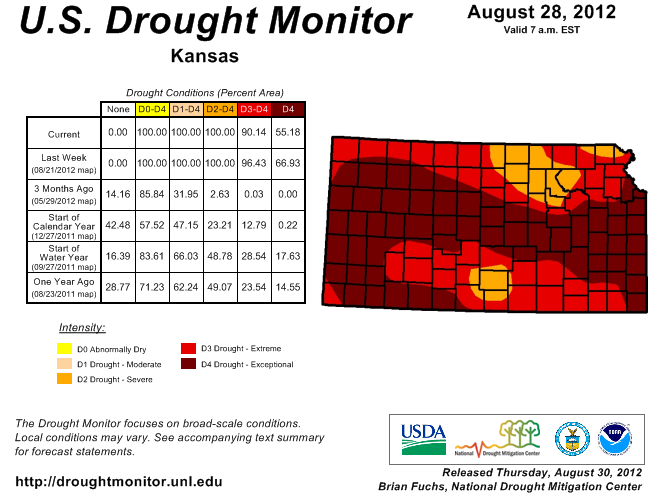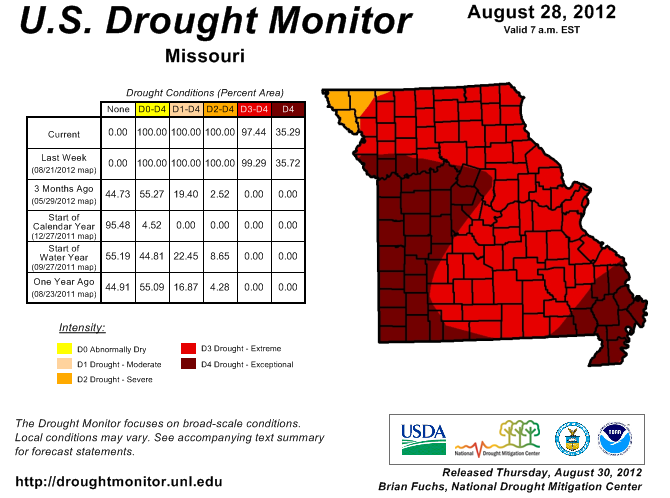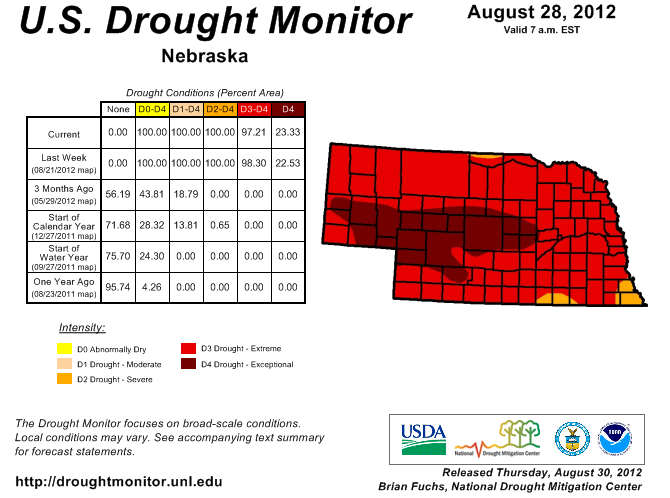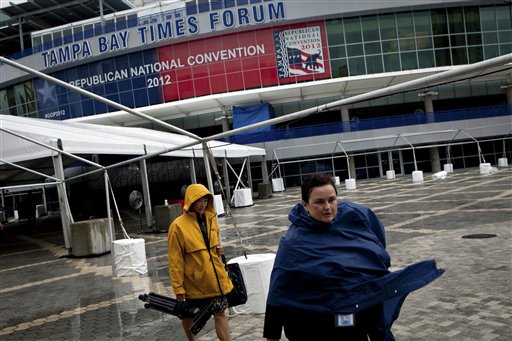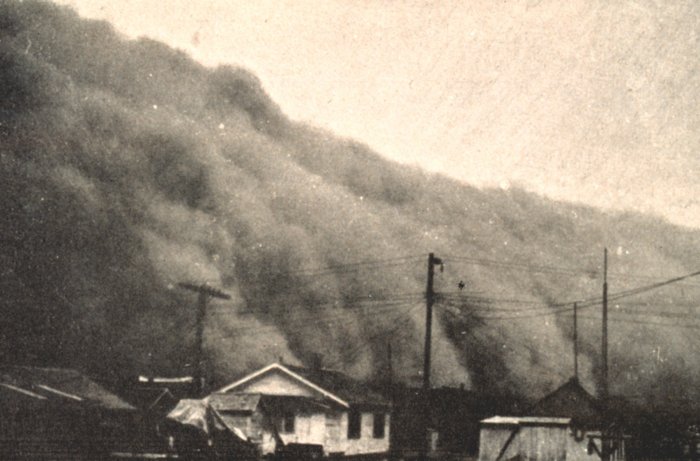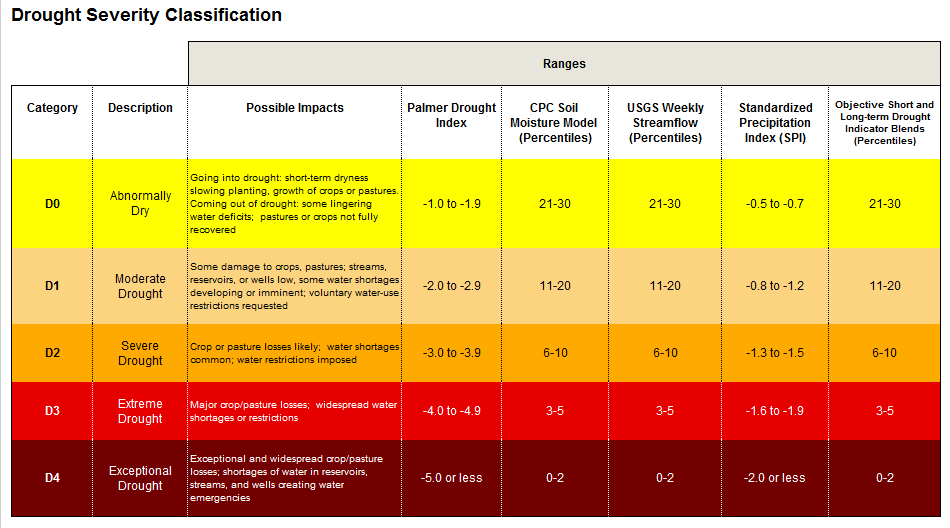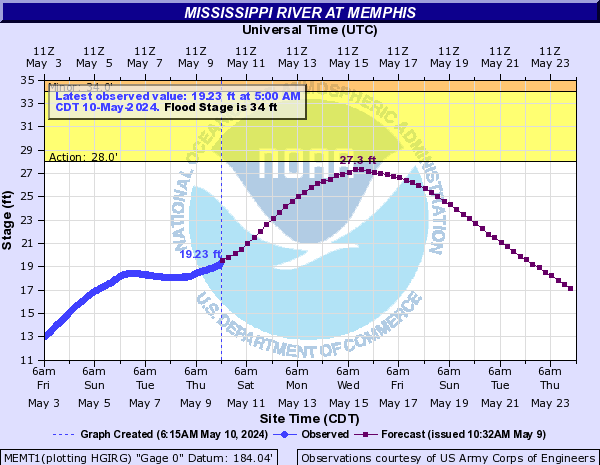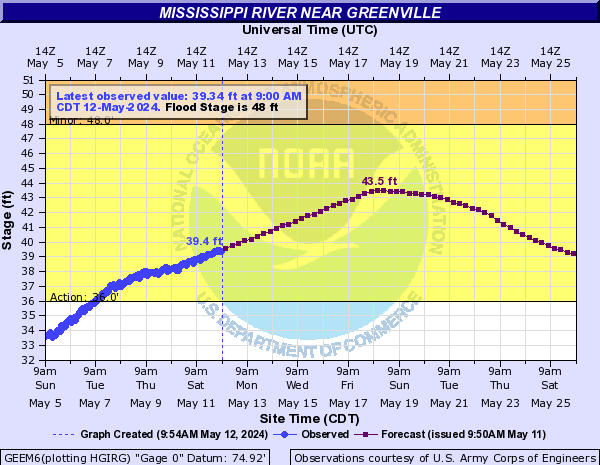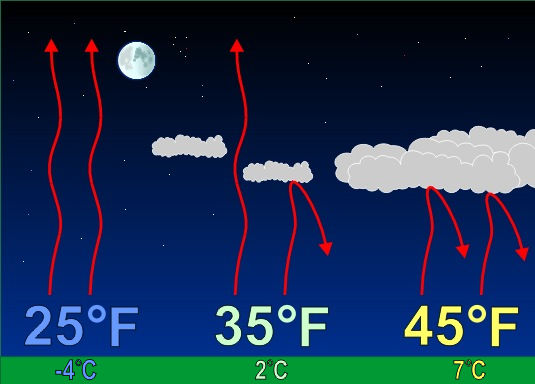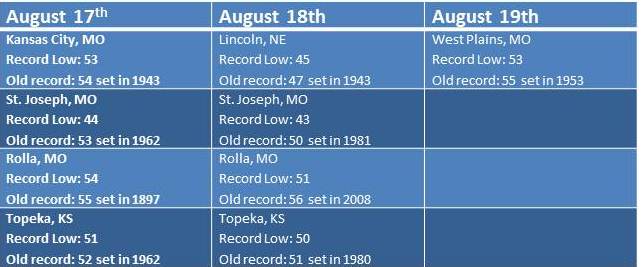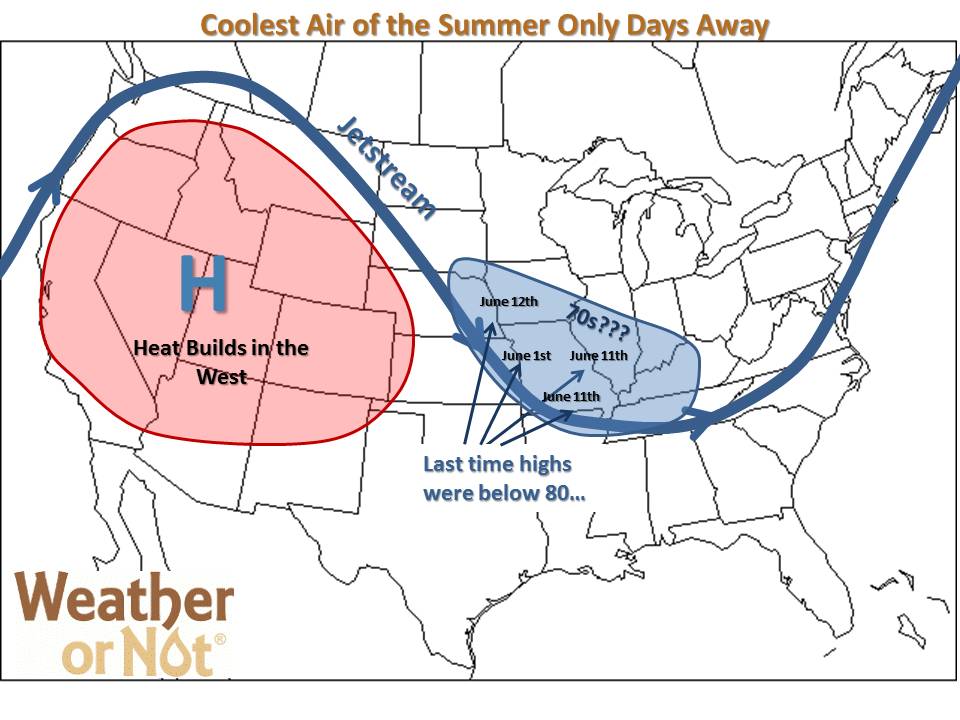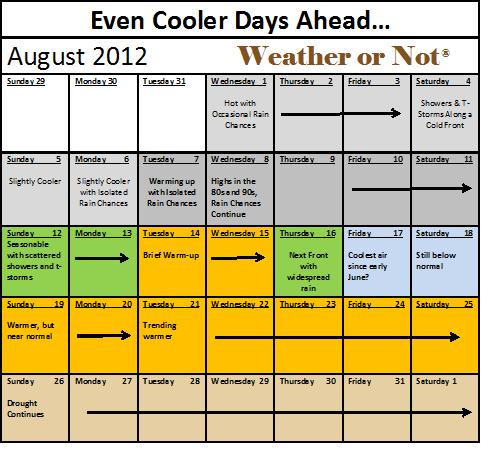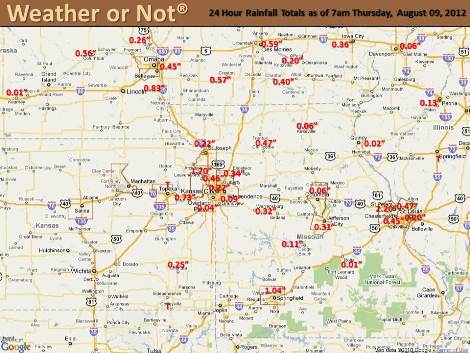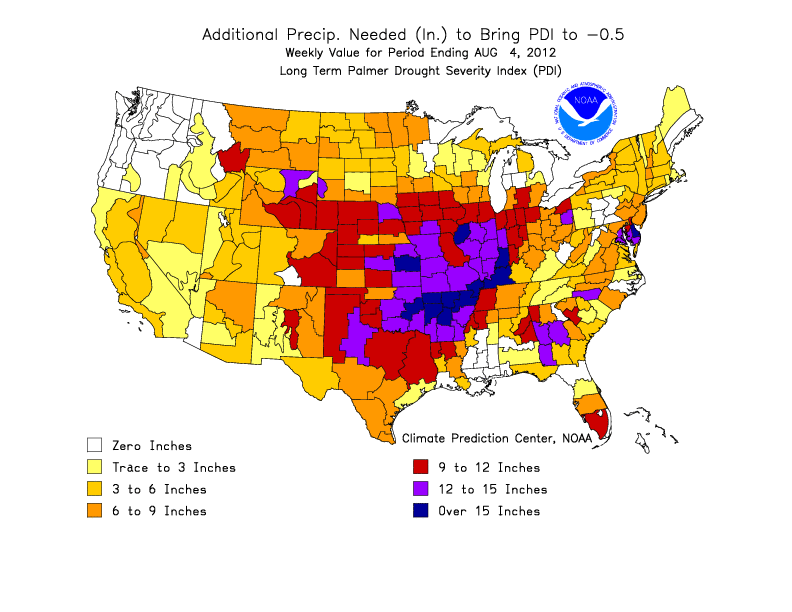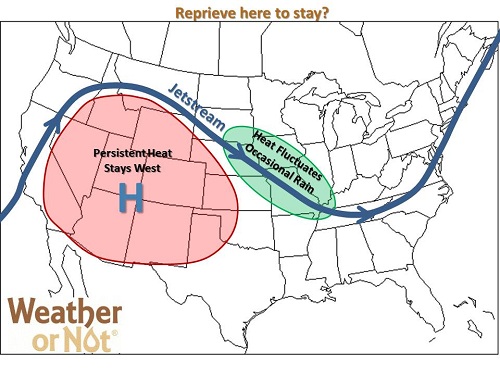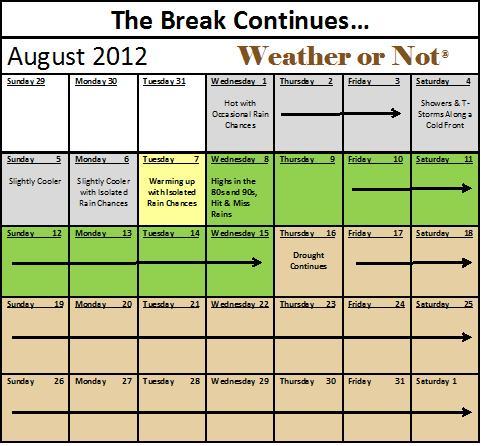August 30, 2012
Released this morning, the latest drought monitor shows slight improvement to Central Kansas and the Northwest corner of Missouri. These areas went from extreme to severe drought. Elsewhere, the impact of the rain last weekend left drought conditions unchanged. ALL could use days of steady rain.
Related: Exceptional Drought? How do they decide?
Does Isaac spell R-E-L-I-E-F? The latest forecast analysis shows that areas of Missouri, adjacent portions of Arkansas, and the Mississippi River Valley could be in line for significant rainfall from the remnants of now Tropical Storm Isaac. Will it be enough to end the drought? Look closely at the latest drought monitor maps below and see what category of drought you are currently in.
If you are in the exceptional drought that encompasses such areas as Kansas City, Columbia or Joplin, you will need at least 9 inches of rainfall to alleviate the drought conditions to the point of being only abnormally dry. Some of those areas actually need in excess of a foot of rain to improve conditions to being only abnormally dry. Those in the severe drought category, will need at least 6-10 inches of rainfall to alleviate drought conditions. On Isaac’s current trajectory, a few isolated areas of Missouri and adjacent areas may be able to approach those critical values.
It’s a tough year when hopes for rain hang on a hurricane. Unfortunately for the Midwest, no other sustained wet pattern is predicted at this time.



